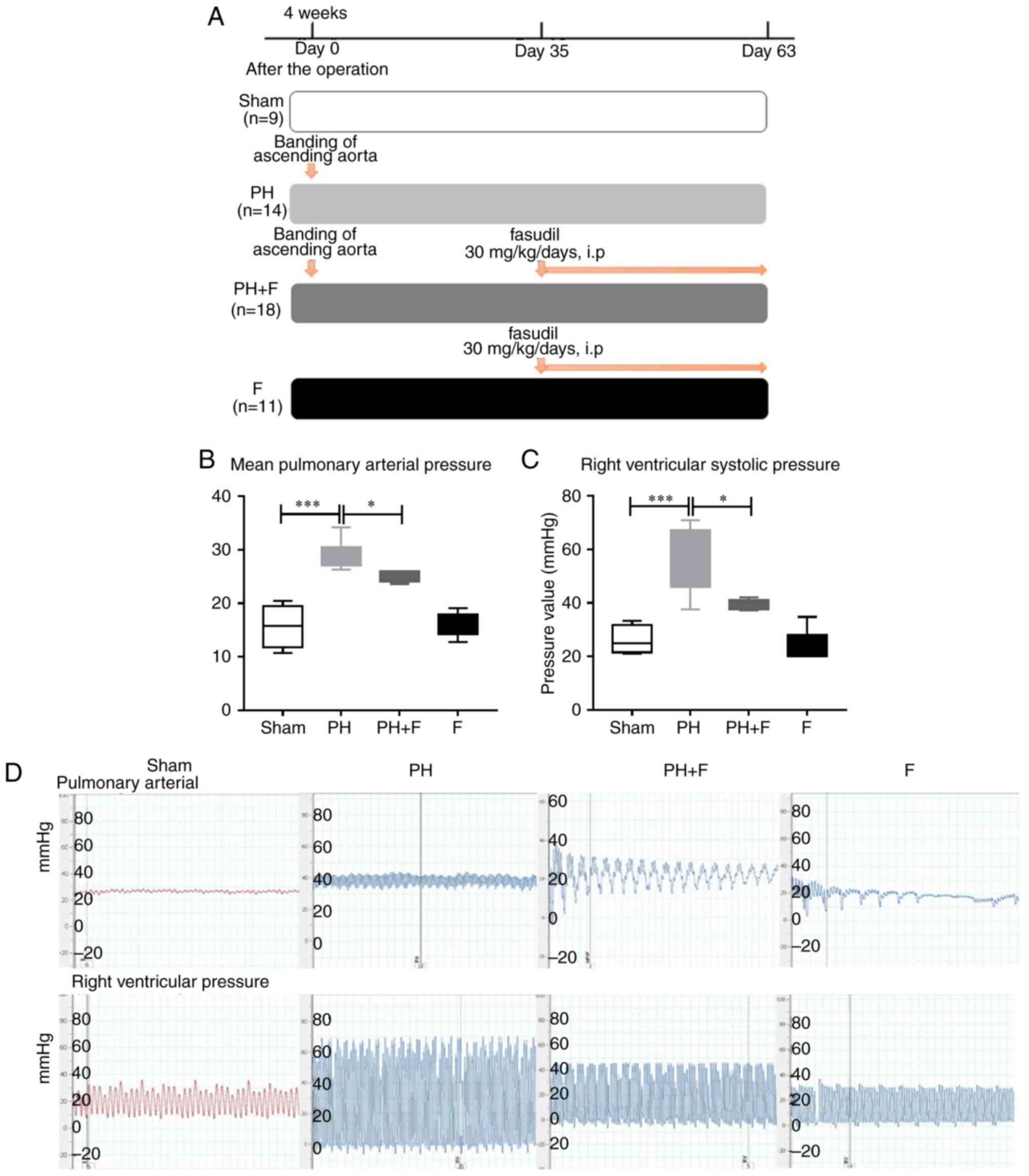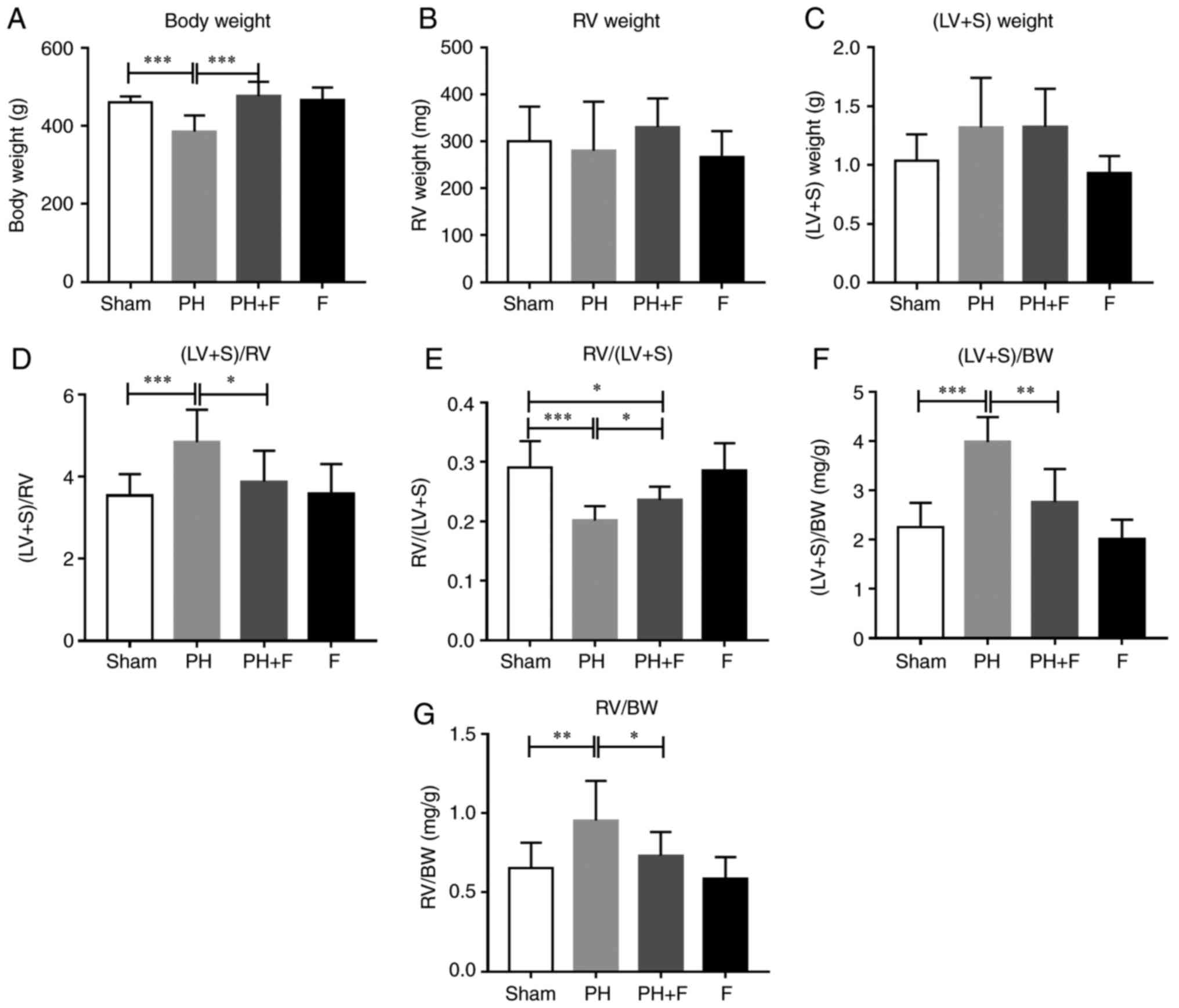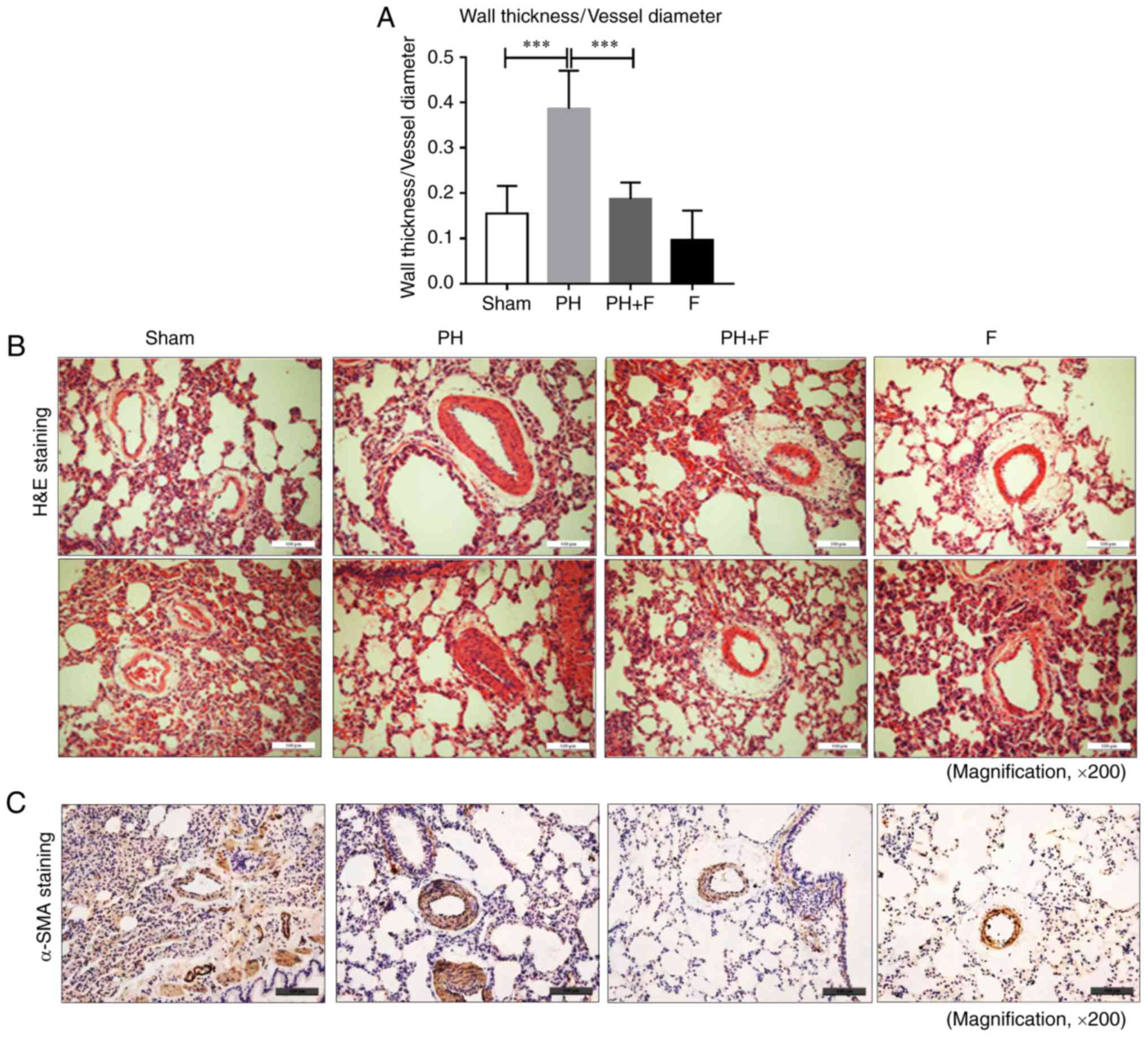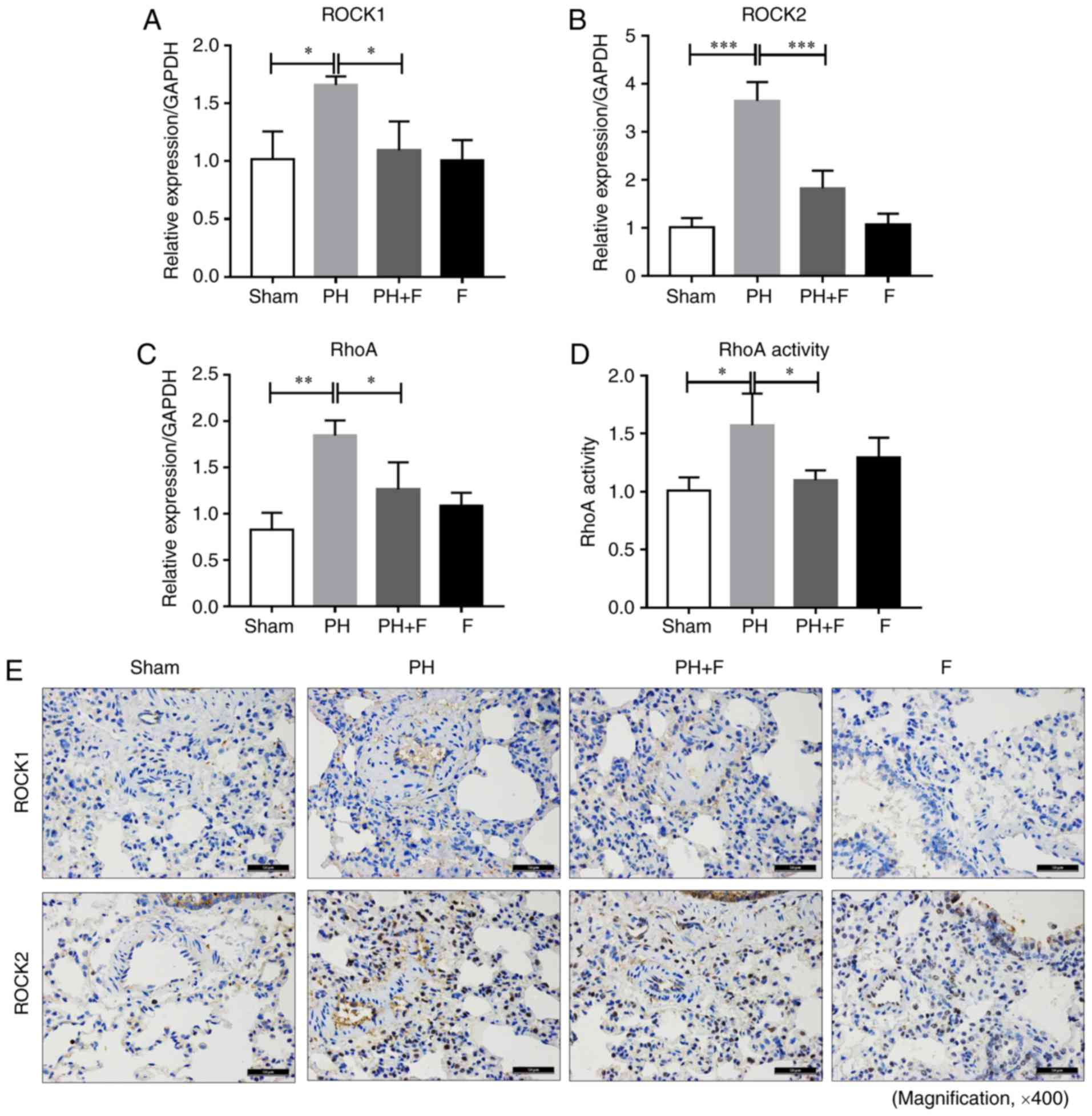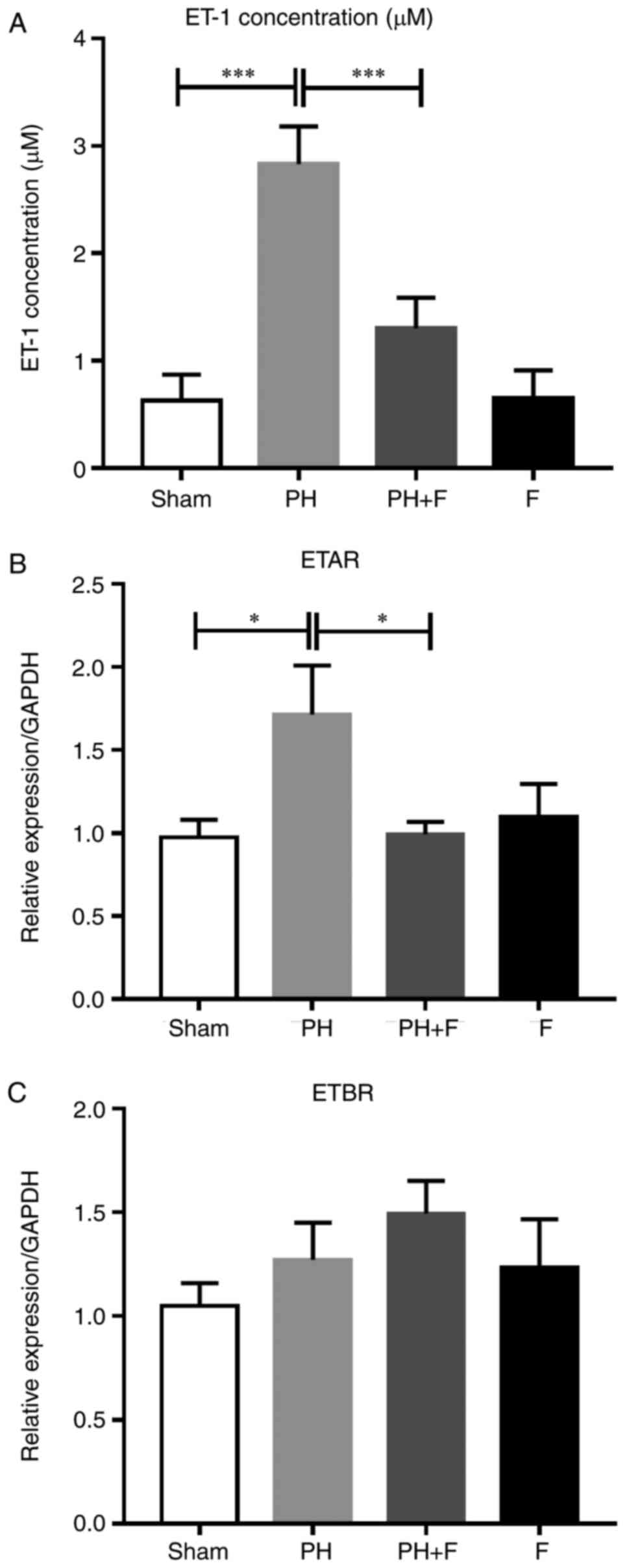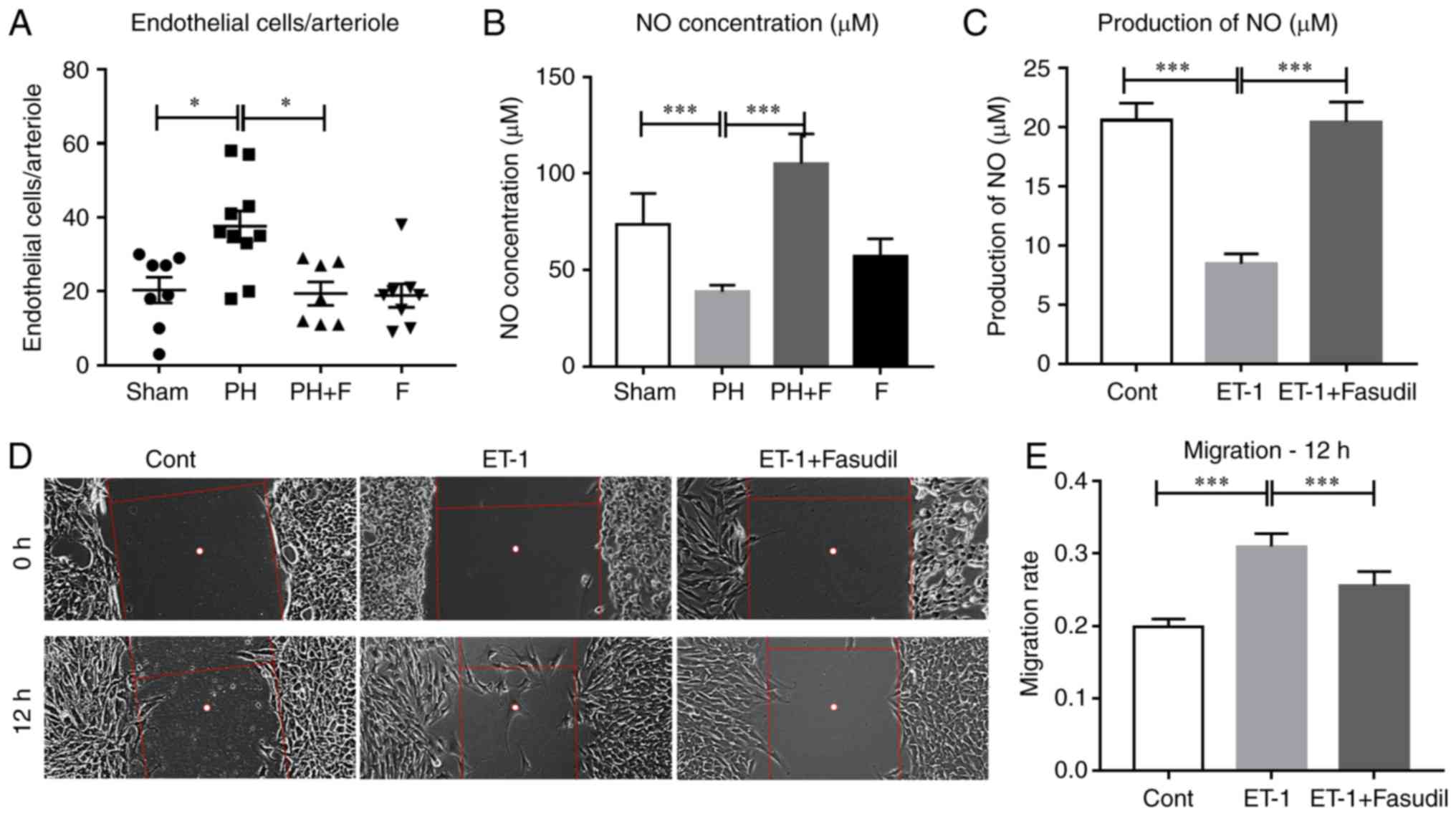|
1
|
Doe Z, Fukumoto Y, Takaki A, Tawara S,
Ohashi J, Nakano M, Tada T, Saji K, Sugimura K, Fujita H, et al:
Evidence for Rho-kinase activation in patients with pulmonary
arterial hypertension. Circ J. 73:1731–1739. 2009. View Article : Google Scholar
|
|
2
|
Delgado JF, Conde E, Sánchez V, López-Ríos
F, Gómez-Sánchez MA, Escribano P, Sotelo T, Gómez de la Cámara A,
Cortina J and de la Calzada CS: Pulmonary vascular remodeling in
pulmonary hypertension due to chronic heart failure. Eur J Heart
Fail. 7:1011–1016. 2005. View Article : Google Scholar : PubMed/NCBI
|
|
3
|
Galie N, Hoeper MM, Humbert M, Torbicki A,
Vachiery JL, Barbera JA, Beghetti M, Corris P, Gaine S, Gibbs JS,
et al: Guidelines for the diagnosis and treatment of pulmonary
hypertension: The task force for the diagnosis and treatment of
pulmonary hypertension of the European Society of Cardiology (ESC)
and the European Respiratory Society (ERS), endorsed by the
International Society of Heart and Lung Transplantation (ISHLT).
Eur Heart J. 30:2493–2537. 2009. View Article : Google Scholar
|
|
4
|
Abe K, Shimokawa H, Morikawa K, Uwatoku T,
Oi K, Matsumoto Y, Hattori T, Nakashima Y, Kaibuchi K, Sueishi K
and Takeshit A: Long-term treatment with a Rho-kinase inhibitor
improves monocrotaline-induced fatal pulmonary hypertension in
rats. Circ Res. 94:385–393. 2004. View Article : Google Scholar
|
|
5
|
Bei Y, Hua-Huy T, Duong-Quy S, Nguyen VH,
Chen W, Nicco C, Batteux F and Dinh-Xuan AT: Long-term treatment
with fasudil improves bleomycin-induced pulmonary fibrosis and
pulmonary hypertension via inhibition of Smad2/3 phosphorylation.
Pulm Pharmacol Ther. 26:635–643. 2013. View Article : Google Scholar : PubMed/NCBI
|
|
6
|
Elias-Al-Mamun M, Satoh K, Tanaka S,
Shimizu T, Nergui S, Miyata S, Fukumoto Y and Shimokawa H:
Combination therapy with fasudil and sildenafil ameliorates
monocrotaline-induced pulmonary hypertension and survival in rats.
Circ J. 78:967–976. 2014. View Article : Google Scholar : PubMed/NCBI
|
|
7
|
Mouchaers KT, Schalij I, de Boer MA,
Postmus PE, van Hinsbergh VW, van Nieuw Amerongen GP, Vonk
Noordegraaf A and van der Laarse WJ: Fasudil reduces
monocrotaline-induced pulmonary arterial hypertension: Comparison
with bosentan and sildenafil. Eur Respir J. 36:800–807. 2010.
View Article : Google Scholar : PubMed/NCBI
|
|
8
|
Oka M, Homma N, Taraseviciene-Stewart L,
Morris KG, Kraskauskas D, Burns N, Voelkel NF and McMurtry IF: Rho
kinase-mediated vasoconstriction is important in severe occlusive
pulmonary arterial hypertension in rats. Circ Res. 100:923–929.
2007. View Article : Google Scholar : PubMed/NCBI
|
|
9
|
Dai ZK, Wu BN, Chen IC, Chai CY, Wu JR,
Chou SH, Yeh JL, Chen IJ and Tan MS: Attenuation of pulmonary
hypertension secondary to left ventricular dysfunction in the rat
by Rho-kinase inhibitor fasudil. Pediatr Pulmonol. 46:45–59. 2011.
View Article : Google Scholar
|
|
10
|
Raja SG: Evaluation of clinical efficacy
of fasudil for the treatment of pulmonary arterial hypertension.
Recent Pat Cardiovas Drug Discov. 7:100–104. 2012. View Article : Google Scholar
|
|
11
|
Guilluy C, Eddahibi S, Agard C, Guignabert
C, Izikki M, Tu L, Savale L, Humbert M, Fadel E, Adnot S, et al:
RhoA and Rho kinase activation in human pulmonary hypertension:
Role of 5-HT signaling. Am J Respir Crit Care Med. 179:1151–1158.
2009. View Article : Google Scholar : PubMed/NCBI
|
|
12
|
Li F, Xia W, Yuan S and Sun R: Acute
inhibition of Rho-kinase attenuates pulmonary hypertension in
patients with congenital heart disease. Pediatr Cardiol.
30:363–366. 2009. View Article : Google Scholar
|
|
13
|
Kojonazarov B, Myrzaakhmatova A,
Sooronbaev T, Ishizaki T and Aldashev A: Effects of fasudil in
patients with high-altitude pulmonary hypertension. Eur Respir J.
39:496–498. 2012. View Article : Google Scholar : PubMed/NCBI
|
|
14
|
Jiang X, Wang YF, Zhao QH, Jiang R, Wu Y,
Peng FH, Xu XQ, Wang L, He J and Jing ZC: Acute hemodynamic
response of infused fasudil in patients with pulmonary arterial
hypertension: A randomized, controlled, crossover study. Int J
Cardiol. 177:61–65. 2014. View Article : Google Scholar : PubMed/NCBI
|
|
15
|
Phrommintikul A, Tran L, Kompa A, Wang B,
Adrahtas A, Cantwell D, Kelly DJ and Krum H: Effects of a Rho
kinase inhibitor on pressure overload induced cardiac hypertrophy
and associated diastolic dysfunction. Am J Physiol Heart Circ
Physiol. 294:H1804–H1814. 2008. View Article : Google Scholar : PubMed/NCBI
|
|
16
|
Satoh S, Ueda Y, Koyanagi M, Kadokami T,
Sugano M, Yoshikawa Y and Makino N: Chronic inhibition of Rho
kinase blunts the process of left ventricular hypertrophy leading
to cardiac contractile dysfunction in hypertension-induced heart
failure. J Mol Cell Cardiol. 35:59–70. 2003. View Article : Google Scholar : PubMed/NCBI
|
|
17
|
Hattori T, Shimokawa H, Higashi M, Hiroki
J, Mukai Y, Tsutsui H, Kaibuchi K and Takeshita A: Long-term
inhibition of Rho-kinase suppresses left ventricular remodeling
after myocardial infarction in mice. Circulation. 109:2234–2239.
2004. View Article : Google Scholar : PubMed/NCBI
|
|
18
|
Yin N, Kaestle S, Yin J, Hentschel T,
Pries AR, Kuppe H and Kuebler WM: Inhaled nitric oxide versus
aerosolized iloprost for the treatment of pulmonary hypertension
with left heart disease. Criti Care Med. 37:980–986. 2009.
View Article : Google Scholar
|
|
19
|
Yuan P, Wu WH, Gao L, Zheng ZQ, Liu D, Mei
HY, Zhang ZL and Jing ZC: Oestradiol ameliorates monocrotaline
pulmonary hypertension via NO, prostacyclin and endothelin-1
pathways. Eur Respir J. 41:1116–1125. 2013. View Article : Google Scholar
|
|
20
|
Fan YF, Zhang R, Jiang X, Wen L, Wu DC,
Liu D, Yuan P, Wang YL and Jing ZC: The phosphodiesterase-5
inhibitor vardenafil reduces oxidative stress while reversing
pulmonary arterial hypertension. Cardiovasc Res. 99:395–403. 2013.
View Article : Google Scholar : PubMed/NCBI
|
|
21
|
Dolber PC, Beyer EC, Junker JL and Spach
MS: Distribution of gap junctions in dog and rat ventricle studied
with a double-label technique. J Mol Cell Cardiol. 24:1443–1457.
1992. View Article : Google Scholar : PubMed/NCBI
|
|
22
|
Wu C, Liu F, Zhou X, Cheng Z, Yang X, Xiao
H, Chen Q and Cai K: Effect of protein kinase C on proliferation
and apoptosis of T lymphocytes in idiopathic thrombocytopenic
purpura children. Cell Mol Immunol. 2:197–203. 2005.PubMed/NCBI
|
|
23
|
Livak KJ and Schmittgen TD: Analysis of
relative gene expression data using real-time quantitative PCR and
the 2(-Delta Delta C(T)) method. Methods. 25:402–408. 2001.
View Article : Google Scholar
|
|
24
|
Hentschel T, Yin N, Riad A, Habbazettl H,
Weimann J, Koster A, Tschope C, Kuppe H and Kuebler WM: Inhalation
of the phosphodiesterase-3 inhibitor milrinone attenuates pulmonary
hypertension in a rat model of congestive heart failure.
Anesthesiology. 106:124–131. 2007. View Article : Google Scholar : PubMed/NCBI
|
|
25
|
Keller RL, Tacy TA, Hendricks-Munoz K, Xu
J, Moon-Grady AJ, Neuhaus J, Moore P, Nobuhara KK, Hawgood S and
Fineman JR: Congenital diaphragmatic hernia: Endothelin-1,
pulmonary hypertension, and disease severity. Am J Respir Crit Care
Med. 182:555–561. 2010. View Article : Google Scholar : PubMed/NCBI
|
|
26
|
Kobayashi H and Puri P: Plasma endothelin
levels in congenital diaphragmatic hernia. J Pediatr Surg.
29:1258–1261. 1994. View Article : Google Scholar : PubMed/NCBI
|
|
27
|
Sugimoto M, Nakayama M, Goto TM, Amano M,
Komori K and Kaibuchi K: Rho-kinase phosphorylates eNOS at
threonine 495 in endothelial cells. Biochem Biophys Res Commun.
361:462–467. 2007. View Article : Google Scholar : PubMed/NCBI
|
|
28
|
Wolfrum S, Dendorfer A, Rikitake Y,
Stalker TJ, Gong Y, Scalia R, Dominiak P and Liao JK: Inhibition of
Rho-kinase leads to rapid activation of phosphatidylinositol
3-kinase/protein kinase Akt and cardiovascular protection.
Arterioscler Thromb Vasc Biol. 24:1842–1847. 2004. View Article : Google Scholar : PubMed/NCBI
|
|
29
|
Ming XF, Viswambharan H, Barandier C,
Ruffieux J, Kaibuchi K, Rusconi S and Yang Z: Rho GTPase/Rho kinase
negatively regulates endothelial nitric oxide synthase
phosphorylation through the inhibition of protein kinase B/Akt in
human endothelial cells. Mol Cell Biol. 22:8467–8477. 2002.
View Article : Google Scholar : PubMed/NCBI
|
|
30
|
Gerges C, Gerges M, Lang MB, Zhang Y,
Jakowitsch J, Probst P, Maurer G and Lang IM: Diastolic pulmonary
vascular pressure gradient: A predictor of prognosis in
̔out-of-proportion̓ pulmonary hypertension. Chest. 143:758–766.
2013. View Article : Google Scholar : PubMed/NCBI
|
|
31
|
Zhang Y and Wu S: Effects of fasudil on
pulmonary hypertension in clinical practice. Pulm Pharmacol Ther.
46:54–63. 2017. View Article : Google Scholar : PubMed/NCBI
|
|
32
|
Oie E, Yndestad A, Robins SP, Bornerheim
R, Asberg A and Attramadal H: Early intervention with a potent
endothelin-A/endothelin-B receptor antagonist aggravates left
ventricular remodeling after myocardial infarction in rats. Basic
Res Cardiol. 97:239–247. 2002. View Article : Google Scholar : PubMed/NCBI
|
|
33
|
Kaluski E, Cotter G, Leitman M,
Milo-Cotter O, Krakover R, Kobrin I, Moriconi T, Rainisio M, Caspi
A, Reizin L, et al: Clinical and hemodynamic effects of bosentan
dose optimization in symptomatic heart failure patients with severe
systolic dysfunction, associated with secondary pulmonary
hypertension-a multi-center randomized study. Cardiology.
109:273–280. 2008. View Article : Google Scholar
|
|
34
|
Balakumar P and Singh M: Differential role
of rho-kinase in pathological and physiological cardiac hypertrophy
in rats. Pharmacology. 78:91–97. 2006. View Article : Google Scholar : PubMed/NCBI
|
|
35
|
Li F, Xia W, Li A, Zhao C and Sun R:
Long-term inhibition of Rho kinase with fasudil attenuates high
flow induced pulmonary artery remodeling in rats. Pharmacol Res.
55:64–71. 2007. View Article : Google Scholar
|
|
36
|
Sun XZ, Tian XY, Wang DW and Li J: Effects
of fasudil on hypoxic pulmonary hypertension and pulmonary vascular
remodeling in rats. Eur Rev Med Pharmacol Sci. 18:959–964.
2014.PubMed/NCBI
|
|
37
|
Fukumoto Y, Matoba T, Ito A, Tanaka H,
Kishi T, Hayashidani S, Abe K, Takeshita A and Shimokawa H: Acute
vasodilator effects of a Rho-kinase inhibitor, fasudil, in patients
with severe pulmonary hypertension. Heart. 91:391–392. 2005.
View Article : Google Scholar : PubMed/NCBI
|
|
38
|
Nunes KP, Rigsby CS and Webb RC:
RhoA/Rho-kinase and vascular diseases: What is the link. Cell Mol
Life Sci. 67:3823–3836. 2010. View Article : Google Scholar : PubMed/NCBI
|
|
39
|
Knipe RS, Probst CK, Lagares D, Franklin
A, Spinney JJ, Brazee PL, Grasberger P, Zhang L, Black KE, Sakai N,
et al: The Rho Kinase Isoforms ROCK1 and ROCK2 each contribute to
the development of experimental pulmonary fibrosis. Am J Respir
Cell Mol Biol. 58:471–481. 2018. View Article : Google Scholar
|
|
40
|
Matsumoto H, Suzuki N, Onda H and Fujino
M: Abundance of endothelin-3 in rat intestine, pituitary gland and
brain. Biochem Biophys Res Commun. 164:74–80. 1989. View Article : Google Scholar : PubMed/NCBI
|
|
41
|
Faraco G, Moraga A, Moore J, Anrather J,
Pickel VM and Iadecola C: Circulating endothelin-1 alters critical
mechanisms regulating cerebral microcirculation. Hypertension.
62:759–766. 2013. View Article : Google Scholar : PubMed/NCBI
|
|
42
|
Miao L, Dai Y and Zhang J: Mechanism of
RhoA/Rho kinase activation in endothelin-1-induced contraction in
rabbit basilar artery. Am J Physiol Heart Circ Physiol.
283:H983–H989. 2002. View Article : Google Scholar : PubMed/NCBI
|
|
43
|
Ma MM, Li SY, Wang M and Guan YY:
Simvastatin attenuated cerebrovascular cell proliferation in the
development of hypertension through Rho/Rho-kinase pathway. J
Cardiovasc Pharmacol. 59:576–582. 2012. View Article : Google Scholar : PubMed/NCBI
|
|
44
|
Tan MS, Chai CY, Wu JR, Yeh JL, Chen IJ,
Kwan AL, Jeng AY, Yang HY, Lee MH and Dai ZK: Differential change
in expression of pulmonary ET-1 and eNOS in rats after chronic left
ventricular pressure overload. Exp Biol Med (Maywood). 231:948–953.
2006.
|
|
45
|
Chou SH, Chai CY, Wu JR, Tan MS, Chiu CC,
Chen IJ, Jeng AY, Chang CI, Kwan AL and Dai ZK: The effects of
debanding on the lung expression of ET-1, eNOS, and cGMP in rats
with left ventricular pressure overload. Exp Biol Med (Maywood).
231:954–959. 2006.
|
|
46
|
Sakao S, Tatsumi K and Voelkel NF:
Endothelial cells and pulmonary arterial hypertension: Apoptosis,
proliferation, interaction and transdifferentiation. Respir Res.
10:952009. View Article : Google Scholar : PubMed/NCBI
|
|
47
|
Budhiraja R, Tuder RM and Hassoun PM:
Endothelial dysfunction in pulmonary hypertension. Circulation.
109:159–165. 2004. View Article : Google Scholar : PubMed/NCBI
|
|
48
|
Long L, Ormiston ML, Yang X, Southwood M,
Gräf S, Machado RD, Mueller M, Kinzel B, Yung LM, Wilkinson JM, et
al: Selective enhancement of endothelial BMPR-II with BMP9 reverses
pulmonary arterial hypertension. Nat Med. 21:777–785. 2015.
View Article : Google Scholar : PubMed/NCBI
|
|
49
|
Tuder RM, Cool CD, Yeager M,
Taraseviciene-Stewart L, Bull TM and Voelkel NF: The pathobiology
of pulmonary hypertension. Endothelium Clin Chest Med. 22:405–418.
2001. View Article : Google Scholar
|
|
50
|
Liu AJ, Ling F, Wang D, Wang Q, Lu XD and
Liu YL: Fasudil inhibits platelet-derived growth factor-induced
human pulmonary artery smooth muscle cell proliferation by
up-regulation of p27kip(1) via the ERK signal pathway. Chin Med J
(Engl). 124:3098–3104. 2011.
|















